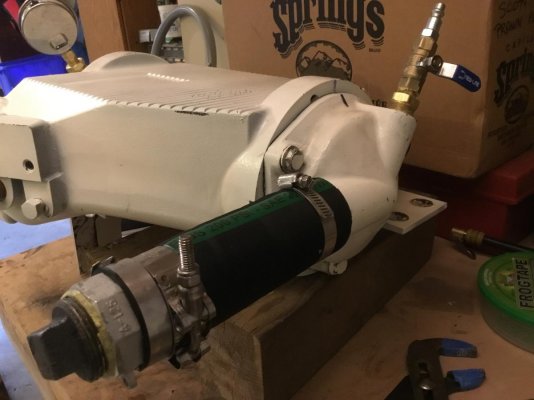jimdavi
Senior Member
- Joined
- Aug 18, 2014
- Messages
- 466
- Location
- USA
- Vessel Name
- Couple’s Retreat
- Vessel Make
- 2019 North Pacific 45
I have read many threads on this but have an additional question. Engine is about a year old, ( Cummins 6.7L 250HP) and had difficulty removing the zincs on the heat exchanger. For some reason they don’t come out easy. Removed the composite end cap and cleaned out the old particles, zincs etc. I did notice the start of lime/build up. No change in engine temp and crud is minor.
Here’s the question- for preventative maintenance ( I don’t flush freshwater currently) what’s the difference between circulating barnacle buster for several hours with a bucket, pump etc. versus something like Sea Flush, which sucks in the fluid, let it sit for several hours, then re starts. The Sea Flush seems simpler, e.g not removing hoses, impeller. For preventative maintenance, wondering if the Sea Flush is effective. Looking to limit disassembly. Planning to do this annually between component removal, clean and testing as required.
Here’s the question- for preventative maintenance ( I don’t flush freshwater currently) what’s the difference between circulating barnacle buster for several hours with a bucket, pump etc. versus something like Sea Flush, which sucks in the fluid, let it sit for several hours, then re starts. The Sea Flush seems simpler, e.g not removing hoses, impeller. For preventative maintenance, wondering if the Sea Flush is effective. Looking to limit disassembly. Planning to do this annually between component removal, clean and testing as required.


